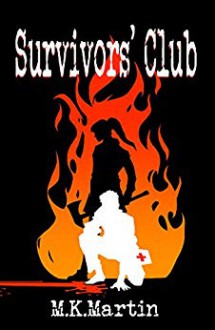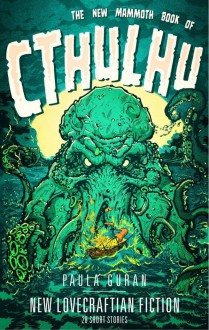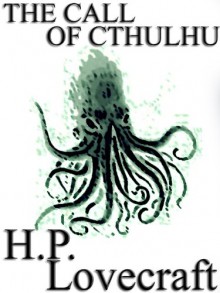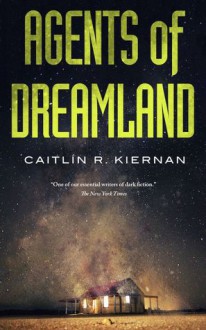
I write this review as a member of Rosie’s Book Review Team and thank Rosie Amber (check here if you would like to have your book reviewed) and the author for providing me an ARC copy of this novel, which I freely chose to review.
Let me start by saying that this book is a pretty wild ride. I quote one of the Amazon reviewers (Eric Witchey) because he says it very well and more concisely than I can (as those who read my reviews know all too well): If Andromeda Strain had mutant, undead Cthulhu babies, this would be the offspring. Yes, indeed. Those of you who follow my blog and my reviews probably know I read some science-fiction but I’m not a big authority on it and it is not one of my default genres. But somehow, when I read the description of this book and the biography of the author, I decided to give it a go. I’ve been interested in genetics since long before I decided to study Medicine, and although I pursued a different line of work, I know I’m not alone in following new discoveries and studies on that field. The book also promised plenty of action, and the author’s own military experience and her degree in psychology intrigued me as well.
The story is narrated in third-person from a variety of characters’ points of view, although each chapter is only told from one point of view, so there is no head-hopping or confusion (although due to the frantic pace the story moves at once the infection starts, it’s important to remain attentive). The three main characters are a scientist (a geneticist), Marius, the head of security at Chrysalis Biopharmaceuticals, John Courage (perfect name), and Miranda, the 18-year-old daughter of the company’s CEO (she joins them later in the book, during the first appearance of the monster/infection). Other members of Chrysalis and other settings also play a part and help create a more rounded view of the events and provide an outsider’s evaluation of the characters. Although there are no lengthy disquisitions, navel-gazing, or tons of biographical information, the main characters are fleshed-out, and they have their quirks (Marius is quite nerdy, with a love of British TV series, while Miranda is a credible young girl, at times losing focus of what is at stake to moan about lack of TV, and she can easily be swayed by the winning smile of a charmer, while John is strong and professional but not without his humanities), their strengths and weaknesses.
The voices of the characters are credible and they use the jargon and technical terms appropriate to their jobs and positions, although the alternating points-of-view ensure that we gain the necessary knowledge from other characters who are also novices, and the story is not difficult to follow, without ever falling into dumbing down or easy explanation. There are likeable and less likeable characters and we get to change our minds about some of them as we read, but I think most readers will find somebody to identify with or care about (and a few individuals to hate too, not to mention the monstruous creature, which has more nuances and is far more intriguing than at first might appear).
The first part of the novel is mostly about setting up the characters and introducing the background information (equivalent to world building) necessary to fully appreciate later the scale of the threat and the difficulties in navigating Chrysalis. The company and its labs are set in an isolated location and their procedures and features turn it into a complex and effective setting for the action scenes, as eerie and creepy as the gothic mansions of the classic horror genre.
The writing is nimble, the scientific and the security topics are well-researched, the action scenes very visual and gritty, showing the expertise of the author, the pace increases as the infection/invasion advances; there is gore, the creatures… Well, the Cthulhu mention is quite apt. There is humour and there are lighter moments, although towards the end of the novel there is not much letting off and the rhythm ramps up to a mad crescendo.
There are pop culture references and some themes running through the novel (what happened in Argentina?) that will amuse some readers more than others, but I feel they add to the atmosphere. I particularly enjoyed the mix of danger and humour, the realism and inside knowledge of how the ex-army security personnel worked and their esprit de corps, and the way the three seemingly disparate protagonists come to know and care for each other. Ah, and there is no explicit love story (there are hints at possible loving feelings between some of the characters but, thankfully, no true or fake romance going on. Hooray!).
The is a sample of the catalogue from the publishers, Not a Pipe Publishing (I love Magritte as well), at the very end of the book, so don’t get too comfortable while you read it, as it will end before you expect it, but the blurbs of the novels made me feel very curious and I’ll have to try to explore it further.
Talking about the ending, yes, it ends with a promise of more adventures and a twist that did not surprise me but I found satisfying. (Oh, and I’ve also read that the author is thinking about writing a short story about what happened in Argentina for her subscribers. I think that’s a great idea and something I was thinking of suggesting as well). I wonder if adding a list of abbreviations or technical terms at the end might assist readers in not missing a single detail, but it is not essential.
In sum, a wild ride, with plenty of thrilling action, scarily credible science, likeable and relatable characters, good doses of humour, in a great setting, and with horrifying and intriguing monsters, who are not, by far, as guilty as the corporate greedy industry behind the plot. I recommend it to lovers of adventures set in a scientific/genetic research environment, especially those who like their monsters to go beyond easy scares. An author to keep an eye on.

 Log in with Facebook
Log in with Facebook 











